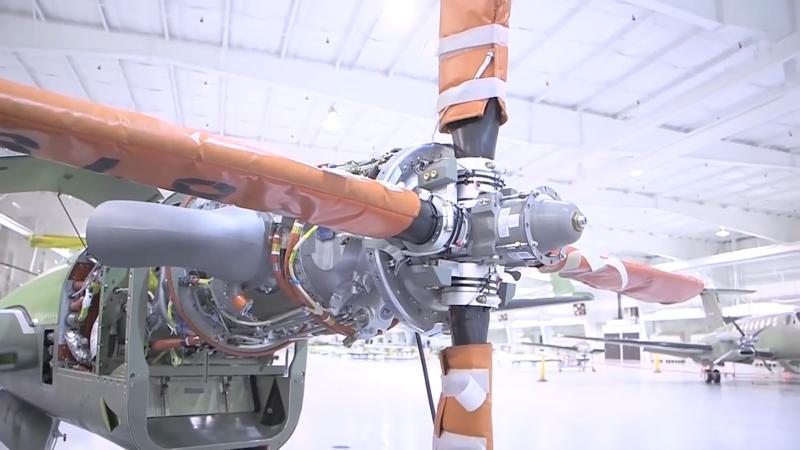Importance of propellers in creating aircraft thrust
Eng Mike Khisa info@airspacenews.co.ke A propeller is a device with a rotating hub and radiating blades that are set at a pitch to form a helical spiral which, when rotated, exerts linear thrust upon a working fluid, in this case, air. It works as an airscrew. Propellers are used to create thrust to drive an aircraft forward through the air. The blades are specially shaped to make rotating airfoils so that their motion through the fluid causes a pressure difference between the two surfaces of the blade by Bernoulli’s principle, which exerts a force on the fluid. Propellers on light aircraft have a fixed pitch. The blades maintain a constant angle during the entire flight. More powerful aircraft have variable pitch propellers that can alter the blade angle. Propeller-driven gas turbine aircraft have much more complex constant-speed reversing propellers. This type can alter the blade angle not just for efficiency but also up to the point of reversing the direction of thrust to slow the aircraft down during the landing roll. The twisted airfoil shape of modern aircraft propellers was pioneered by the Wright brothers. Orville and Richard Wright realised that an air propeller is essentially the same as a wing. Using data from their earlier wind tunnel experiments on wings, they introduced the aerodynamic twist along the length of propeller blades. This ensures the angle of attack of the blades is kept relatively constant along the length. The propeller blades they designed were only about five per cent less efficient than their modern equivalents, some 100 years later. The understanding of low-speed propeller aerodynamics was fairly complete by the 1920s, but later requirements to handle more power in smaller diameters made them improve in design and construction over the years. -The author is a flight engineer

